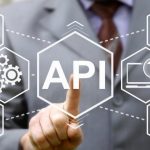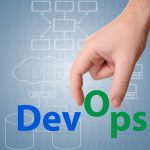Seven steps to successfully migrate your enterprise data to the cloud

Amidst a challenging economic climate many businesses are unsurprisingly reviewing their spending, with research from the Institute of Directors finding most businesses are unlikely to increase investment over the next 12 months.
One area currently bucking this trend is the cloud. Research shows almost half of tech and business leaders are increasing investment in cloud-based products and services, and a third of them plan to migrate their legacy enterprise software and on-premises workloads to the cloud.
How AppSec can help enterprises make sense of cloud-native development [Q&A]

Today's application security landscape is complex and can lead to teams spending a lot of time hunting down vulnerabilities. Add in the move to cloud-based development and there's an even higher volume of code to deal with
We spoke to Shahar Man, CEO at Backslash Security, to learn more about what AppSec needs to look like in this world and how it ties in with greater use of the cloud.
Meeting the challenges of API security [Q&A]

In today's increasingly digitally-centered organizations, the development of products, services, and solutions increasingly depends on the implementation of Application Programming Interfaces (APIs).
APIs have become the building blocks of modern business applications and are critical to digital transformation -- so much so that API security has become a boardroom issue.
UK regulator to investigate hyperscalers' dominance of the cloud market

The UK's Competition and Markets Authority (CMA) is launching a market investigation into the supply of public cloud infrastructure services in the UK. Between them, Amazon and Microsoft enjoy a combined market share of 60-70 percent of Britain's cloud computing industry.
This follows a referral by telecoms regulator Ofcom which has expressed concerns around egress fees, discounts -- which may incentivize customers to use only one cloud provider, and technical barriers to switching.
Younger employees more likely to have unsafe cybersecurity habits

A new report into hidden threats from Ivanti finds that one in three employees believe their actions do not impact their organization's security.
The research also shows that Millennial and Gen Z office workers are more likely to have unsafe cybersecurity habits when compared to Gen X and older (those above 40 years of age).
Collaboration tools open up businesses to added digital risk

Thanks to remote working, businesses have become reliant on tools like Slack and Teams for workplace communication. But this new, unstructured data set introduces risk caused by the everyday conversations in which proprietary, harmful, or sensitive information is shared or deleted.
AI data platform Aware has released a new report based on proprietary research conducted using the AI-powered platform AwareIQ. It finds collaboration platforms are moving beyond chat and are now at the center of a new enterprise workflow, with 15.4 percent of messages originating from integrated third-party applications.
What's driving the need for cybersecurity in ESG [Q&A]

Environmental social and governance (ESG) policy sees businesses seek to implement ethical practices to safeguard, not just the business, but its ecosystem of partners and customers and the wider world.
We spoke to Tim Wallen, regional director for the UK, US and emerging markets at Logpoint, to discuss the reasons why cybersecurity needs to be incorporated into ESG reporting, and how this can be achieved.
Three-quarters of organizations struggle with remote work challenges

The shift to remote and hybrid working models has magnified IT operational challenges for 75 percent of organizations.
A new study by Forrester Consulting for HP surveyed over 300 IT and security decision makers and finds the main challenges companies face when managing remote endpoints are ensuring data security (60 percent), keeping software on remote devices up to date (55 percent), and maximizing the accuracy of asset databases (55 percent).
Conquering disruption: How to build a more resilient business

From COVID-19, the energy crisis and widespread strikes, business continuity managers have been kept busy in the last few years. And the impact of these events, as well as ongoing threats like cyber attacks, mean that continuity planning is a regular topic on boardroom agendas.
Business resilience is now crucial to guaranteeing continuity and sustainable operations. In fact, according to PwC’s Global Crisis Survey 2023, 89 percent of organizations state business resilience as one of their key strategic priorities. But what are the key factors at play in building a more resilient organization?
Enterprises have ambitious plans for machine learning but the road isn't a smooth one

A new survey looks at how organizations find business value from machine learning (ML), how they plan to invest in the near term, and the challenges they expect to face in achieving their ambitious goals for getting new ML initiatives into production.
The study, conducted by NewtonX for Wallaroo.AI, asked asked chief data officers, chief analytics officers and leaders responsible for AI business outcomes in US private enterprises how they plan to invest in the near term and the challenges they expect to face in achieving their goals for getting new ML initiatives into production.
Enterprises lack strategy for DevOps automation

Investments in DevOps automation are delivering significant benefits, including a 61 percent improvement in software quality, a 57 percent reduction in deployment failures, and a 55 percent decrease in IT costs.
However, a new survey from Dynatrace shows that just 38 percent of organizations have a clearly defined DevOps automation strategy.
Businesses forced to cut software spend due to economic downturn

Financial pressures have forced businesses to cut their software spend by between 10 and 30 percent, according to a new report from SaaS procurement and management platform CloudEagle.
The EagleEye SaaS Spend report analyzed $400M in transactions via the CloudEagle platform and shows that spending on software is now the third-biggest expense for organizations, right after employee and office costs.
The battle for control of cloud environments [Q&A]

Lack of control has long been a pain point for developers in cloud computing, especially with the market dominated -- and controlled -- by a few large providers.
What's likely to happen as developers' desire for control meets the hyperscalers' desire to keep companies locked into their platforms? We spoke to Billy Thompson, solutions engineering manager at Akamai, to find out.
The key threats facing ICS/OT environments

Industrial control system and operational technology environments are becoming increasingly interconnected and complex, offering efficiency and innovation. However, this also exposes organizations to heightened vulnerabilities from relentless cyber threats.
The latest SANS 2023 ICS/OT Cybersecurity Survey, sponsored by critical infrastructure protection specialist OPSWAT, shows the three items of utmost importance for ICS security programs in 2023 have been identified as network visibility, risk assessments, and transient device threat detection.
Improving remediation in practice -- five ways get ahead on fixes

Remediating security issues and potential software vulnerabilities is one of the fastest ways to improve security and prevent attacks. It’s a standard process for security teams, and it should make the job easier for everyone involved. Yet many of the security issues that we see exploited remain known software vulnerabilities -- in Qualys' Top 20 Security Vulnerability Research this year, the top five most common exploits include a privilege escalation issue in the Zerologon protocol, remote code execution (RCE) problems in Microsoft Office and Wordpad from 2017 and even an RCE with Microsoft Windows Common Controls from 2012. These issues still exist, and have been targeted by threat actors this year.
So why are these old problems still present in production systems years after patches have been released, and why have they not been fixed? What is holding IT teams back around this backlog of vulnerabilities, and how can teams improve their processes to get ahead of these problems in future?
Recent Headlines
Most Commented Stories
BetaNews, your source for breaking tech news, reviews, and in-depth reporting since 1998.
© 1998-2025 BetaNews, Inc. All Rights Reserved. About Us - Privacy Policy - Cookie Policy - Sitemap.